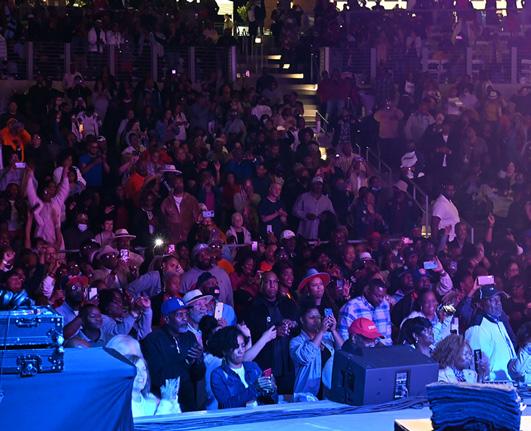
3 minute read
city AMphitheAters bring people together for Music And More
BY AILEEN HARRIS
As stockbridge MAyor
Advertisement
Anthony Ford stood on stage in September 2021 about to open the city’s new amphitheater and welcome the entertainers for the venue’s first concert, he realized the moment was the culmination of a journey that had started nearly 10 years prior.
“IN 2012, I WAS A CITIZEN VOLUNTEER ON THE LCI (Livable Centers Initiative) for the city of Stockbridge. I wasn’t an elected official,” Ford recalled. “To welcome Patti LaBelle and Gladys Knight and to see the amphitheater come to fruition was a great thing for me as an individual but also for the city and the region because we are now moving forward with the LCI process. We are doing something good for our residents and bringing people downtown.”
The Livable Centers Initiative is an Atlanta Regional Commission grant program created to reduce vehicle miles traveled and improve air quality. The program incentivizes local jurisdictions to re-envision their communities as vibrant, walkable places that offer increased mobility options, encourage healthy lifestyles and provide improved access to jobs and services.
LaGrange’s Sweetland Amphitheater at Boyd Park has featured country music stars Willie Nelson and Charlie Daniels as well as soul singer Gladys Knight and funk group George Clinton’s Parliament Funkadelic.
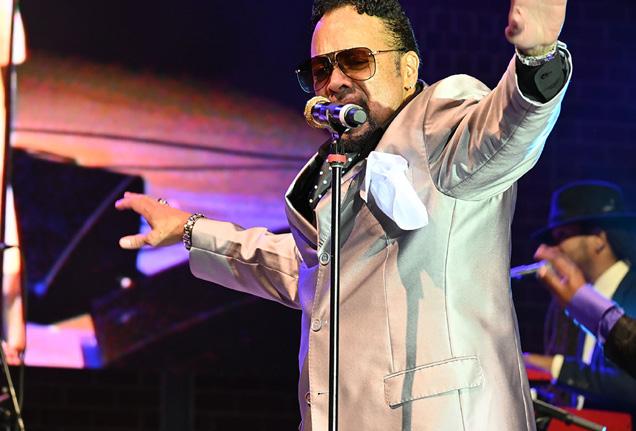
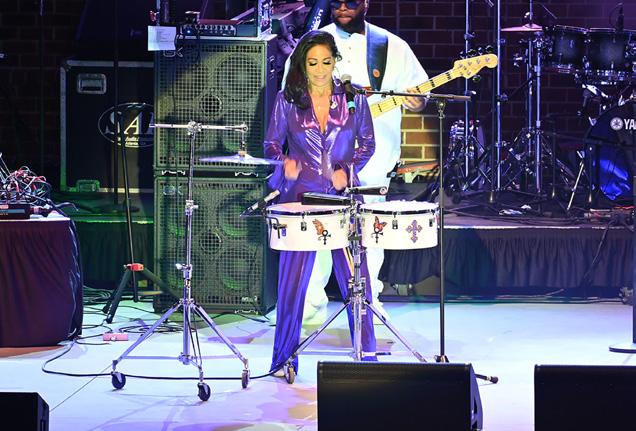
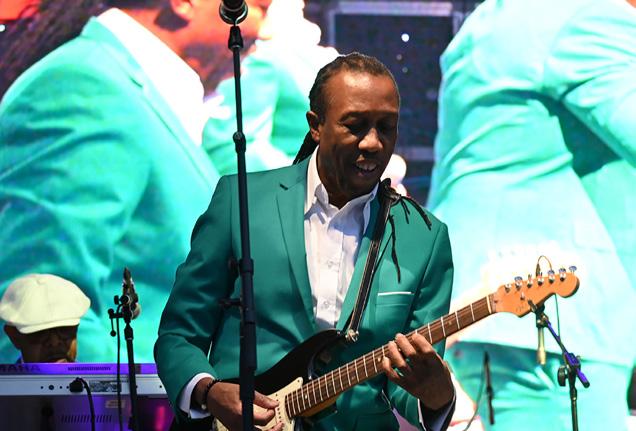
“It is a community service for people in our community that we bring that level of talent at the cost we bring it,” said Sweetland General Manager Brent Gibbs. “The amphitheater is a community asset, people from all over the world come to perform on our stage. It’s a source of pride for the community that everyone seems to rally around.”
“AMphitheAters And public perforMAnce spAces help creAte those plAces where people wAnt to live, young people wAnt to stAy And businesses wAnt to be.” tinA lilly
Ford said “The Bridge” amphitheater allows for people to see their favorite artists without having to travel far. “People can enjoy a concert close to home and it brings them to our downtown area.”
Stockbridge’s “The Bridge” Amphitheater is one of many city-owned amphitheaters across the state. While several metro Atlanta cities have amphitheaters, including College Park, Peachtree City, Riverdale, Sugar Hill and Woodstock, amphitheaters in the cities of Carrollton, LaGrange, Madison, Royston and Thomasville—all serve as catalysts for reviving downtowns and bringing residents and visitors together.
“Music is the universal language,” said Georgia Council of the Arts Executive Director Tina Lilly. “Cities can program events at amphitheaters that serve all different parts of the community. Outdoor music venues are a great place for community development.”
Amphitheaters can also serve as tourist attractions bringing visitors and their dollars. “Arts attendees spend twice as much money as other visitors,” Lilly said. “Having arts performances that are accessible is a great way to attract people to the community. Everybody benefits.”
Both Stockbridge and LaGrange’s amphitheaters help generate business for downtown restaurants and nearby hotels.
“Music venues are vitally important in terms of revitalizing a downtown or keeping a downtown alive at times when its normally not, like after hours or on the weekend,” Lilly said. “In a place like Thomasville, the amphitheater helped to expand the downtown.”
Ford said The Bridge is also helping to attract private investment to its downtown. “The private sector sees that the city is working on its vision,” he said. “They know the city has a stake in the game.”
While there are many benefits to having an amphitheater, they are not without challenges, particularly when it comes to programming.
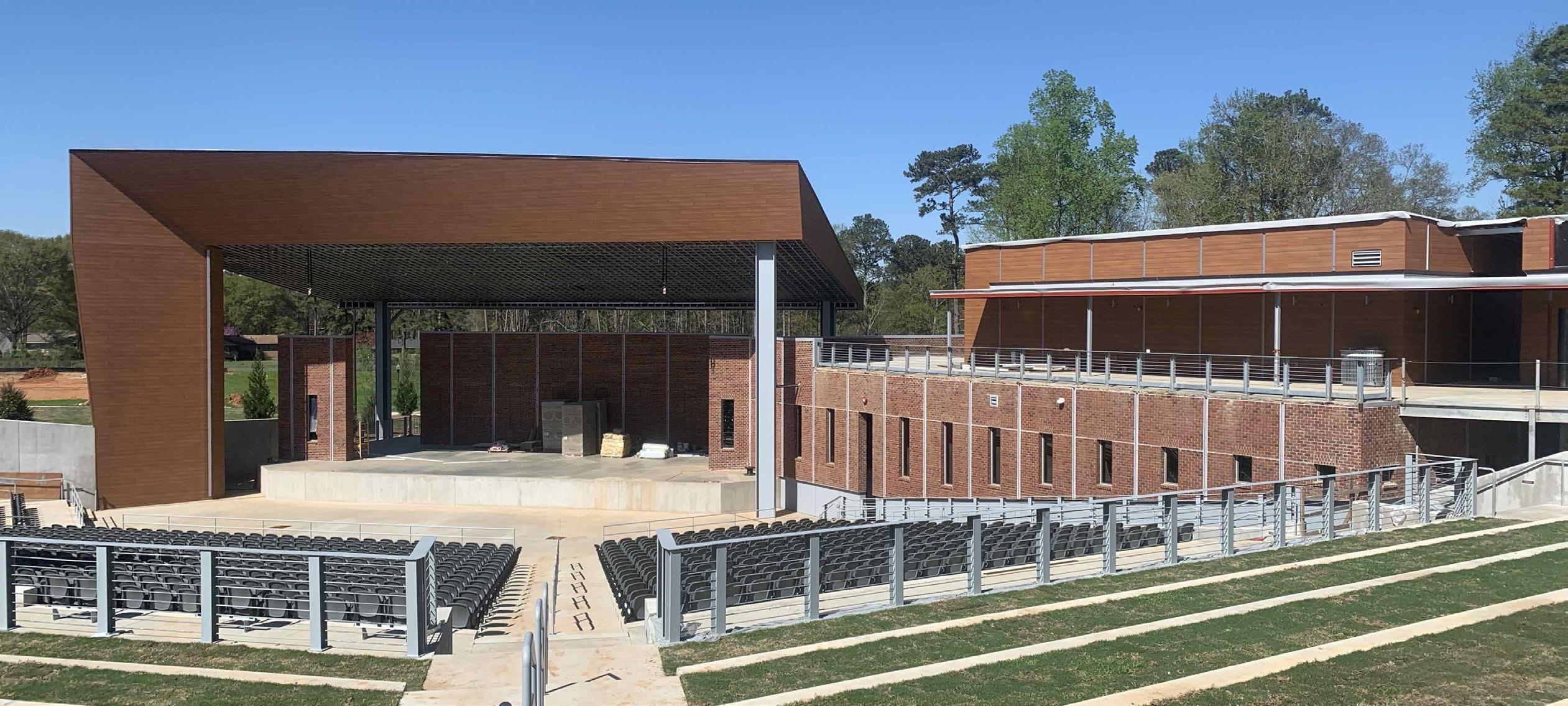
‘My biggest piece of advice for cities considering an amphitheater is to think about who is going to program the space and plan all the events, “Lilly said. “What kind of equipment will you need? Where will you store it? If you have well-known artists, you will need dressing rooms and showers? Think about who is going to run the facility and book the artists.”
Lilly said the community should be part of the programming conversation early on. “I think cities should think about all parts of the community when considering programming,” she said. “Make sure all community members have input.”
Gibbs agrees, as Sweetland has also hosted Easter egg hunts, July 4 celebrations and community fundraisers
“We make sure the programming is reflective of our values as a community,” Gibbs said.
Stockbridge’s “The Bridge” General Manager Harold Young said programming can be a puzzle. “We have to stay connected with other communities,” he said. “There is limited talent, and we don’t want to compete with nearby venues.” The Bridge also hosts school graduations, festivals and fundraisers.
Ford said cities considering building an amphithe¬ater should understand their desired size, the needed land and how construction and operating costs will be funded. “If you are trying to build an amphitheater within 15 to 30 miles of an existing one in a community with a similar demographic, it may not work well,” he said. “You have to understand the market.”
Lilly further advised that cities considering amphitheaters should think about how they can use the space outside of its primary purpose, so it is in use more than just a few times a year. “Can it host picnics or dog walks?” she said, noting that Madison works with its arts center to program its amphitheater while Carrollton’s amphitheater has a unique design that provides daytime shade.
“Amphitheaters and public performance spaces help create those places where people want to live, young people want to stay and business want to be,” Lilly added. “Amphitheaters can be an asset to large and small cities—helping them feel alive, vibrant and thriving.”










